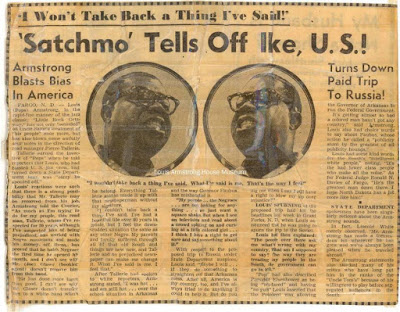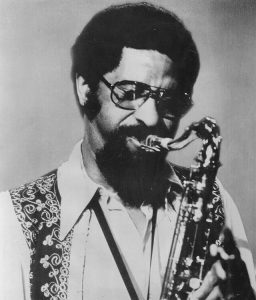Artist-Educators, Blog, Chroniclers
Inspired by Chapter One (pgs. 28-34) of Texan Jazz by Dave Oliphant
Composer Euday Bowman (1915)
Born November 9, 1887, Fort Worth, Texas
Louis Armstrong – Recorded 1927
Benny Moten & His Kansas City Orchestra – Recorded 1927
Duke Ellington – 1931
Fats Waller – Recorded 1935
Count Basie with Lester Young – Recorded 1939
Andy Kirk featuring Mary Lou Williams (piano and arranger) – Recorded 1940
https://www.youtube.com/watch?v=iP0bsxX0TqM
Sidney Bechet – Recorded 1941
This page inspired by Chapter One (pgs. 28-34) of Texan Jazz by Dave Oliphant
– Ken McCarthy
P.S. Our unique programming is made possible by help from people like you. Learn how you can contribute to our efforts here: Support Jazz on the Tube
Thanks.
Blog, Chroniclers, Jazz on the Tube Interview, Podcasts
Interview with Hugh Wyatt
Download the mp3 here
Hugh Wyatt was part of the group that put the legendary New York radio station WBLS on the air and saved the Apollo Theater.
For nearly thirty years, he wrote and edited for New York Daily News.
And he’s enjoyed a long friendship with Sonny Rollins,
In this landmark book, Hugh not only shares some previously unknown details of Sonny’s life and evolution as an artist, he also goes into depth on a little appreciated fact of jazz history: the serious spiritual seeking that characterizes Sonny’s life and the lives of many of the great artists whose work formed jazz as we know it today.
You can get information on Hugh’s book through his publishing company: Kamama Books
– Ken McCarthy
Jazz on the Tube
Music credit: The Jazz on the Tube podcast theme song is “Mambo Inferno” performed by The Manhattan School of Music Afro-Cuban Jazz Orchestra conducted by Bobby Sanabria from the CD ¡Que Viva Harlem!
Artist-Educators, Blog, Chroniclers, Jazz on the Tube Interview, Podcasts, Producer-Presenters
Interview with Judy Carmichael
Download the mp3 here
Part Two of our conversation with Judy Carmichael…
Pianist, singer, song writer, author, producer – and host of the best jazz interview show on the radio (and the Internet): Jazz Inspired. Click here for more info about Judy Click here to listen to Judy’s Jazz Inspired interview with Alan Broadbent
– Ken McCarthy
Jazz on the Tube
Music credit: The Jazz on the Tube podcast theme song is “Mambo Inferno” performed by The Manhattan School of Music Afro-Cuban Jazz Orchestra conducted by Bobby Sanabria from the CD ¡Que Viva Harlem!
Artist-Educators, Blog, Chroniclers, Jazz on the Tube Interview
Download the mp3 here
Jazz on the Tube’s Ken McCarthy discusses the work of drummer/percussionist/healer/martial artist/philosopher Milford Graves with Jake Meginsky, maker of the documentary “Milford Graves Full Mantis.”
The film “Full Mantis” is now available on Amazon Prime.
Also available via pay-per-play on Vudu, YouTube and Google Play.
– Ken McCarthy
Jazz on the Tube
Music credit: The Jazz on the Tube podcast theme song is “Mambo Inferno” performed by The Manhattan School of Music Afro-Cuban Jazz Orchestra conducted by Bobby Sanabria from the CD ¡Que Viva Harlem!
Artist-Educators, Blog, Chroniclers, Jazz on the Tube Interview, Podcasts, Producer-Presenters
Interview with Judy Carmichael
Download the mp3 here
Part One of our conversation with Judy Carmichael…
Pianist, singer, song writer, author, producer – and host of the best jazz interview show on the radio (and the Internet): Jazz Inspired.
Click here for more info about Judy
Click here for more info about Jazz Inspired
– Ken McCarthy
Jazz on the Tube
Corrections: 1. Bob French was Gerald French’s uncle, not father. 2. The name of Judy’s new album is Can You Love Once More?
Music credit: The Jazz on the Tube podcast theme song is “Mambo Inferno” performed by The Manhattan School of Music Afro-Cuban Jazz Orchestra conducted by Bobby Sanabria from the CD ¡Que Viva Harlem!
Blog, Chroniclers, Jazz on the Tube Interview, Podcasts
Interview with Al Jackson
Download the mp3 here
Test your knowledge of jazz history
True or false
#1 – Louis Armstrong was born on August 4, 1901 not July 1, 1900 as he and his mother said – and there is conclusive documentary evidence that establishes the August 4th date.
FALSE
There is no valid documentary evidence that proves a birth date other than the one Armstrong and his mother claimed: July 4, 1900.
The document that supposedly “proves” his birth as being on August 4th is literally nothing more than a scrap of paper without provenance. It’s certainly not an official birth certificate or baptismal certificate.
Further, the idea that Louis Armstrong, a poor black child, would have been baptized at an all white Catholic Church in Mid-City (Sacred Heart of Jesus) during a period of strict segregation is far-fetched in the extreme.
It would be like boxer Mike Tyson, another young black boy born into difficult circumstances, being baptized at St. Patrick’s Cathedral.
#2 – After he moved to Chicago in 1922, Armstrong virtually stopped coming to New Orleans, essentially boycotting the city for the rest of his life.
FALSE
The official ledger of the black musicians union in New Orleans – of which Armstrong was a member – clearly records that he performed at least 14 times in New Orleans during a period “historians” say he boycotted the city.
Where did he perform? At black-only clubs, this at a time when audiences were racially segregated by law.
(Ask Dr. John how many times as a young man he was arrested and taken to jail in handcuffs for performing with black musicians at the Dew Drop Inn.)
#3 It’s certain and proven that Louis Armstrong’s mother worked as a prostitute.
FALSE
There is no documentary evidence of any kind that establishes that Armstrong’s mother worked in any “crib” or brothel or as a prostitute
The record only shows that she lived for a while in a rooming house in a “bad section” of town, one of the few housing options available to low income blacks in that city at that time. The assertion that her exact profession is known is based on nothing more than a guess by “historians”
Louis Armstrong, Little Rock, and Eisenhower

On September 29, 1957, about ten days after he put his career on the line by publicly denouncing Eisenhower for failing to provide protection to black school children threatened by racist mobs in in Little Rock, Arkansas, Armstrong appeared on the DuPont Show of the Week called “Crescendo.”
At the 1:05 mark, he looks heavenward and quotes “The Star Spangled Banner” briefly – a tune he had pointedly stopped playing publicly.
I recommend you watch this clip a couple of times so that you can see what I see in it:
Armstrong is praying for his country’s soul.
In between Armstrong’s very strongly worded public comments and this performance, on September 26 Eisenhower finally sent US troops to Little Rock to make sure black students there could enter their school safely.
– Ken McCarthy
Jazz on the Tube
Music credit: The Jazz on the Tube podcast theme song is “Mambo Inferno” performed by The Manhattan School of Music Afro-Cuban Jazz Orchestra conducted by Bobby Sanabria from the CD ¡Que Viva Harlem!



